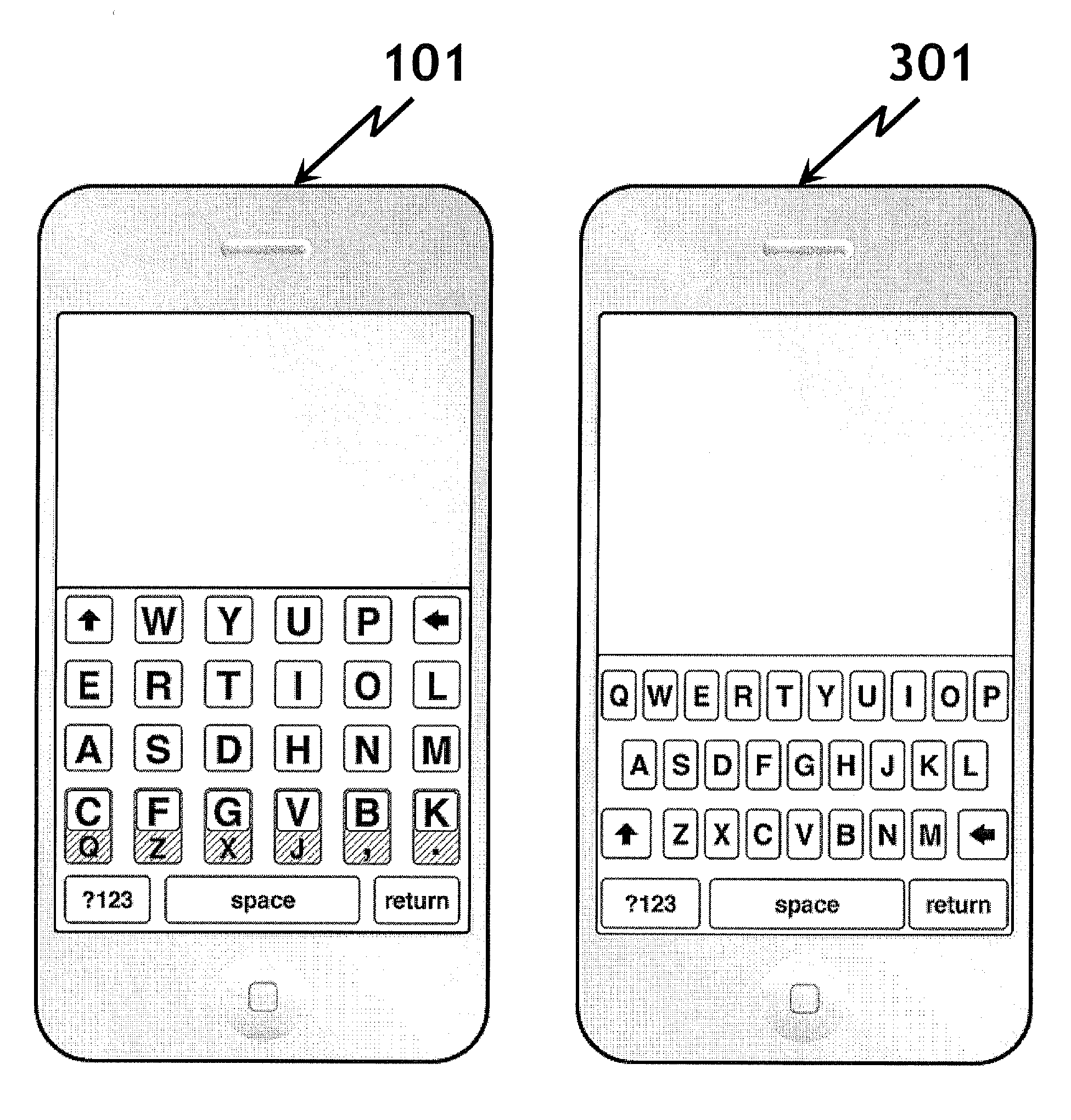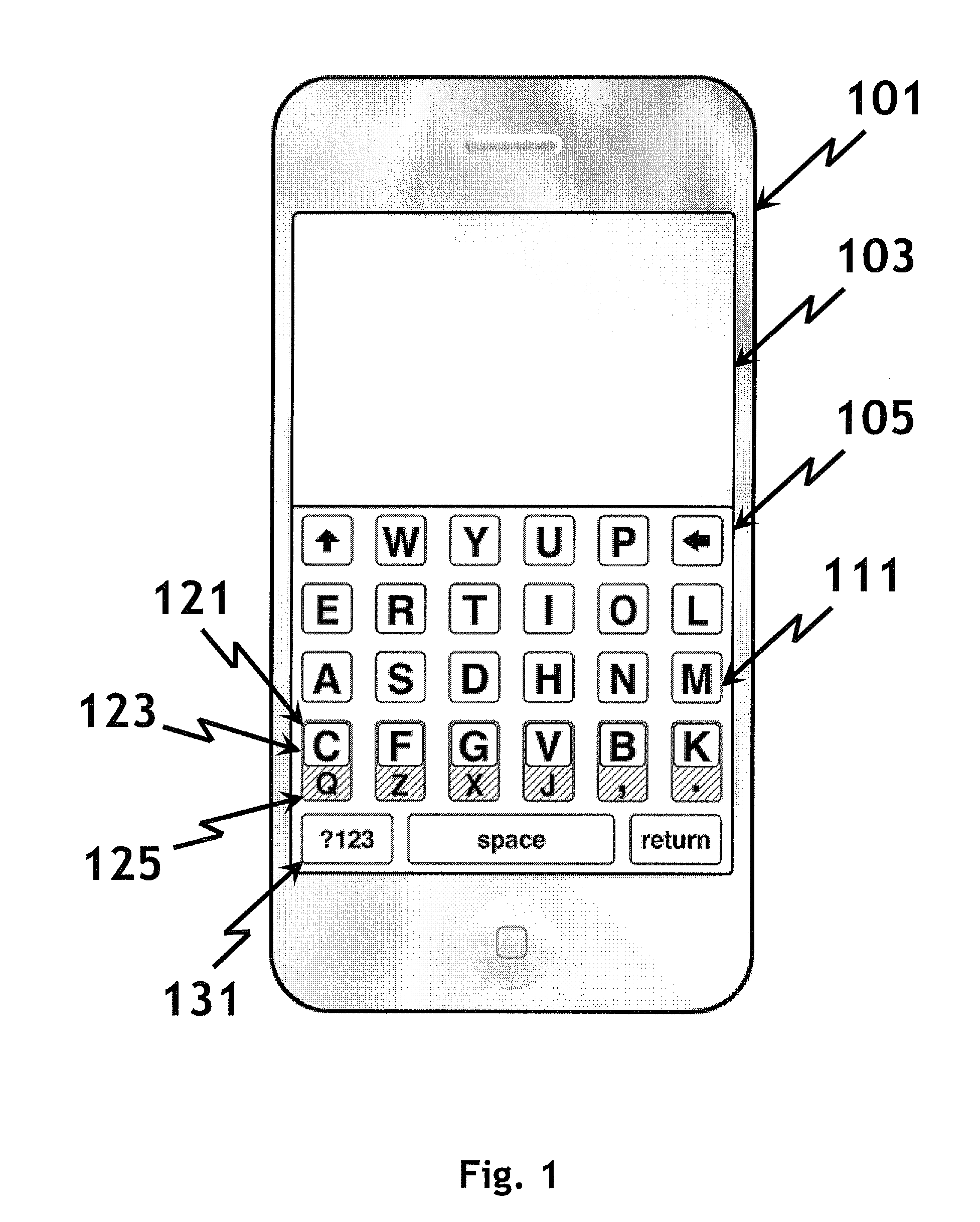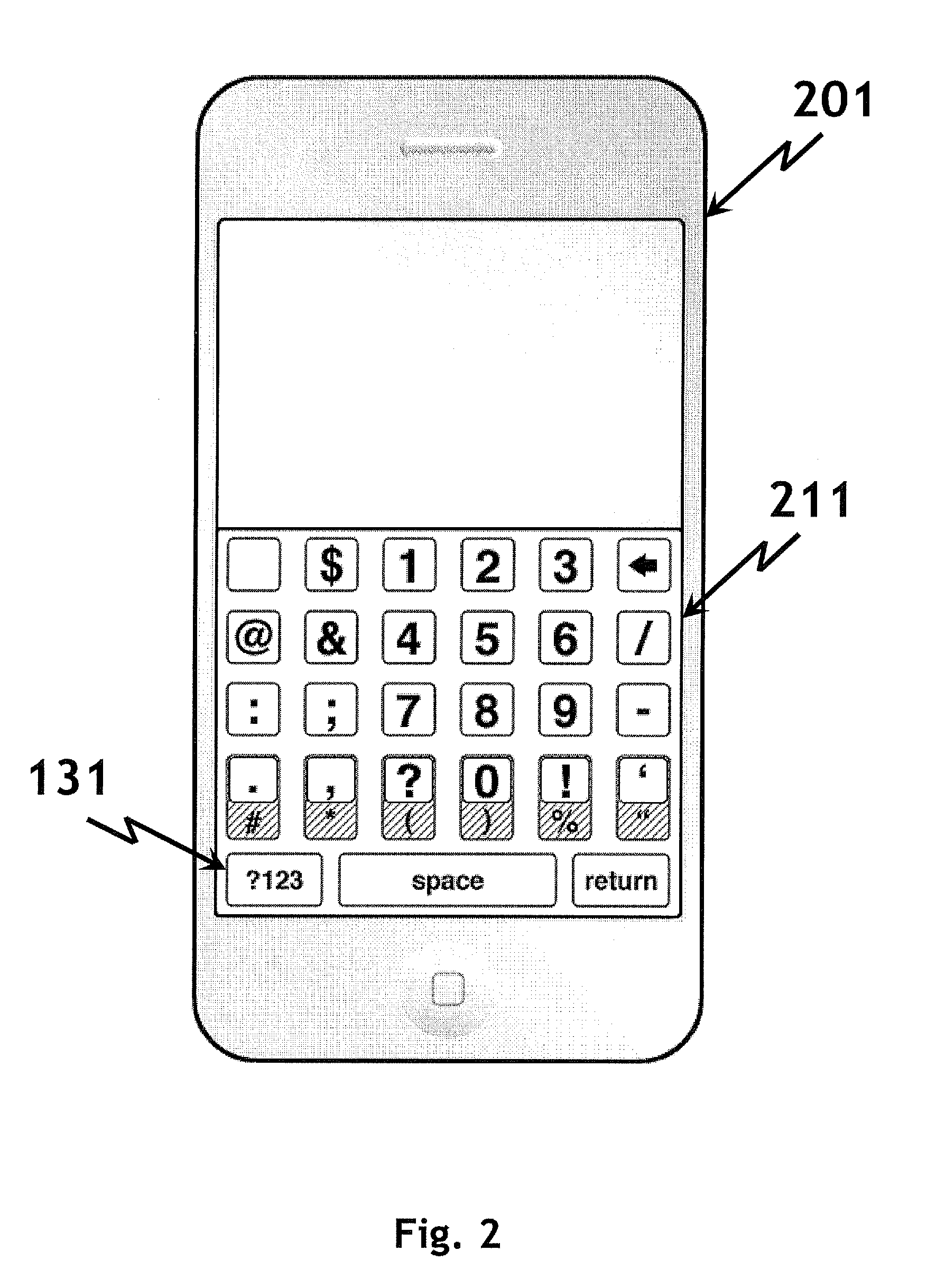Alphanumeric keypad for touch-screen devices
- Summary
- Abstract
- Description
- Claims
- Application Information
AI Technical Summary
Benefits of technology
Problems solved by technology
Method used
Image
Examples
Embodiment Construction
[0035]Referring to Table 1, an important aspect of the design is the incorporation into the design of the frequency of letter usage in the English language. In this embodiment, the primary letters are used of 99% of the time—and thus can be selected more easily and rapidly with a typical touch contact with the screen. The second letters require an additional sliding movement—but since they are rarely selected—do not impact the speed of entering text. Also referring to Table 1, the top and bottom rows—Row 1 and Row 2 contain less frequently used letters, which facilitates the entry of multiple sequential letters.
TABLE 2TouchSlideW1.9%Y1.7%U2.7%P2.0%Row 18.4%E12.5%R6.1%T9.3%I7.3%O7.6%L4.1%Row 246.9%A8.0%S6.5%D4.0%H5.5%N7.1%M2.5%Row 333.7%C3.1%Q0.1%F2.3%Z0.1%G2.0%X0.2%V1.0%J0.2%B1.5%K0.7%Row 410.5%0.6%Total99.4%0.6%
TABLE 1Letter Frequency in the English Languagee t a o i n s r h l d c u m f p g w y b v k x j q zLetter Frequency of the Most Common 1st Letter in Wordst o a w b c d s f m ...
PUM
 Login to View More
Login to View More Abstract
Description
Claims
Application Information
 Login to View More
Login to View More - R&D
- Intellectual Property
- Life Sciences
- Materials
- Tech Scout
- Unparalleled Data Quality
- Higher Quality Content
- 60% Fewer Hallucinations
Browse by: Latest US Patents, China's latest patents, Technical Efficacy Thesaurus, Application Domain, Technology Topic, Popular Technical Reports.
© 2025 PatSnap. All rights reserved.Legal|Privacy policy|Modern Slavery Act Transparency Statement|Sitemap|About US| Contact US: help@patsnap.com



